
Roots
The strands that crown our heads, particularly those of textured heritage, carry stories spanning millennia. They are not merely biological filaments; they are living archives, whispering tales of communal bonds, spiritual beliefs, and artistic ingenuity. To gaze upon a coil, a kink, a ripple, is to see the very essence of ancestry made manifest, a profound connection to the earth and the sky.
Our exploration into hair density, then, becomes a journey into the heart of historical African styling artistry, a meditation on how the very nature of each strand shaped boundless creativity and purpose. It is a dialogue with the past, revealing how the inherent qualities of textured hair became the foundation for some of the world’s most enduring and meaningful aesthetic practices.

What Ancestral Threads Connect Hair Density to Identity?
In countless pre-colonial African societies, hair transcended simple adornment. It was a potent symbol, a visual language communicating a person’s identity, age, marital status, wealth, and even their spiritual state. A well-groomed head of hair, often signifying prosperity and health, was a highly admired feature in communities across the continent.
The very density of hair, its abundant volume and resilience, provided an expansive canvas for these profound expressions. Imagine the collective artistry at play, where the physical presence of hair became an extension of one’s lineage and community standing.
Hair’s intrinsic density provided ancient African communities a vital material for complex, symbolic artistry.
The diverse forms of African hair, characterized by their tight coiling patterns, naturally present with a greater appearance of fullness than other hair types, even if the actual follicular density might vary. This visual richness was not overlooked by ancestral stylists; it was the raw material, inviting manipulation, sectioning, and sculptural forms that spoke volumes without a single uttered word. The inherent springiness of tightly coiled strands, coupled with their collective body, allowed for gravity-defying styles, intricate geometric patterns, and layered compositions that celebrated the hair’s natural inclinations.
Scholars such as Sylvia Ardyn Boone, in her studies of the Mende culture of Sierra Leone, observed that West African communities held immense admiration for a woman with a robust head of long, thick hair. This was understood to represent “the life force, the multiplying power of profusion, prosperity, a ‘green thumb’ for bountiful farms and many healthy children” (Boone, as cited in FSU The Voice, 2017). This cultural valuation of density underscores its role, not just as a physical attribute, but as a deeply symbolic indicator of vitality and communal well-being.
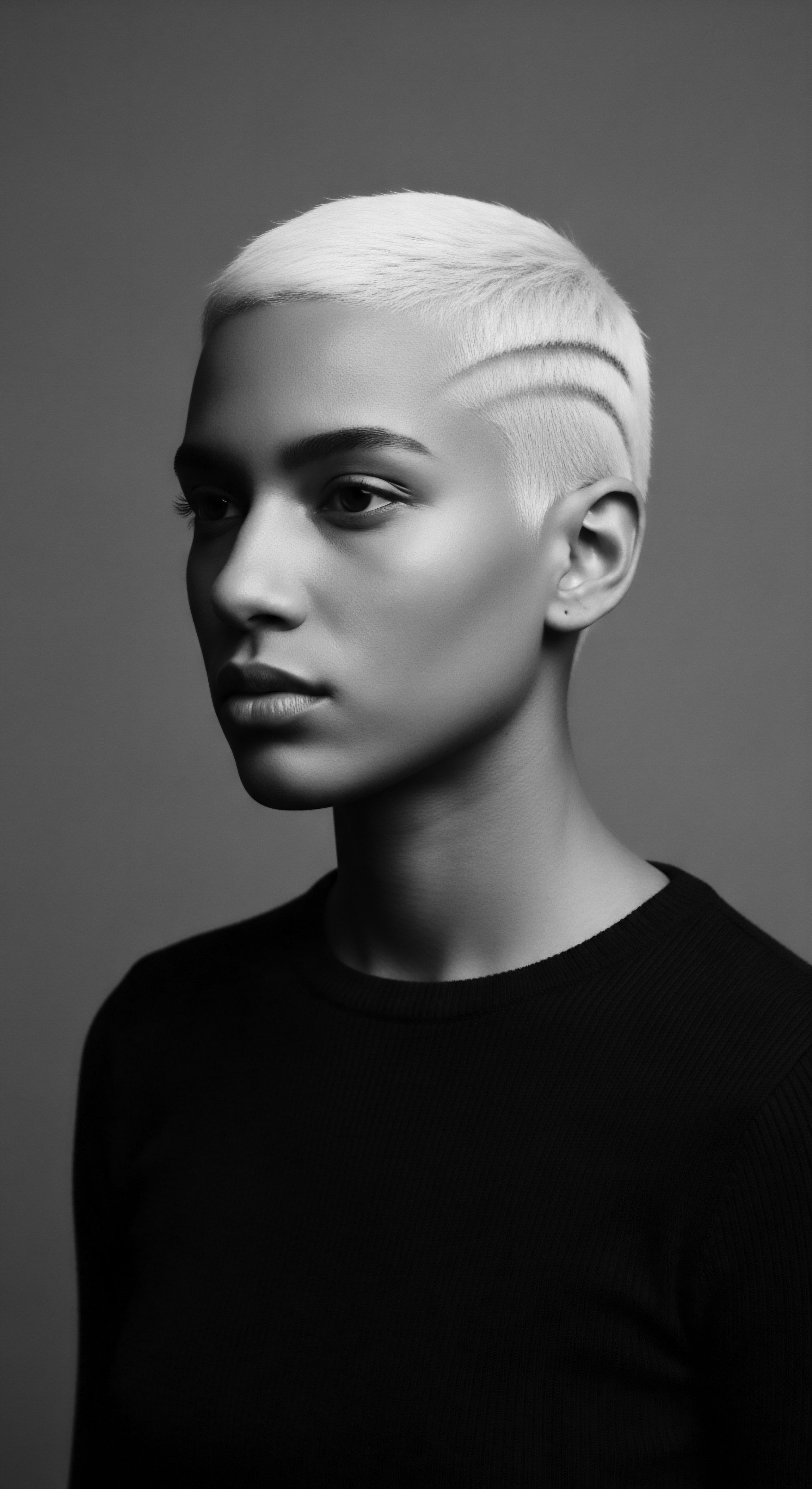
Mapping the Follicular Landscape
From a biological standpoint, hair density refers to the number of hair follicles present per square centimeter of scalp. While individuals of African descent typically possess fewer individual hair follicles than those of Caucasian or Asian descent, the tightly coiled, often oval-shaped structure of each strand gives the hair an unparalleled volumetric presence. A 2017 study by Birnbaum and colleagues, for instance, revealed that individuals of African descent exhibited an average hair density ranging from 148 to 160 hairs per square centimeter, compared to Caucasian individuals averaging 214 to 230 hairs per square centimeter. This statistical reality, though indicating a lower count of individual hairs, is counterbalanced by the unique morphology of the strand itself.
The tighter the coil, the more space it occupies, creating a visually dense appearance that ancient artisans understood and leveraged with remarkable skill. The spiraled shape and thickness of afro-textured hair contribute to its outwardly dense appearance, despite the lower follicular count. This characteristic provided the very foundation for the voluminous and often architectural styles that became hallmarks of African hair artistry.
The interplay of genetics and environment over generations sculpted the diverse hair textures across the African continent. From the finely coiled strands of Central Africa to the looser curls found in parts of North and East Africa, this spectrum of densities, each with its unique capabilities, informed distinct artistic traditions. For instance, the very structure of the hair shaft itself, often flattened or elliptical in cross-section for tighter coils, creates what appears as a greater density when compared to rounder, straighter strands. This elemental biology was the starting point, the inherent material that dictated the possibilities and limitations of styling, yet never stifled expression.

Ritual
The historical shaping of African styling artistry through hair density unfolds not just as a scientific exploration, but as a ceremonial unveiling of practice, purpose, and profound cultural significance. The hands that braided, twisted, and sculpted hair were not merely practitioners of aesthetics; they were custodians of living heritage, translating the inherent qualities of textured hair into statements of identity, status, and spiritual connection. The way communities engaged with hair density was interwoven with their daily lives, their rites of passage, and their collective memory.
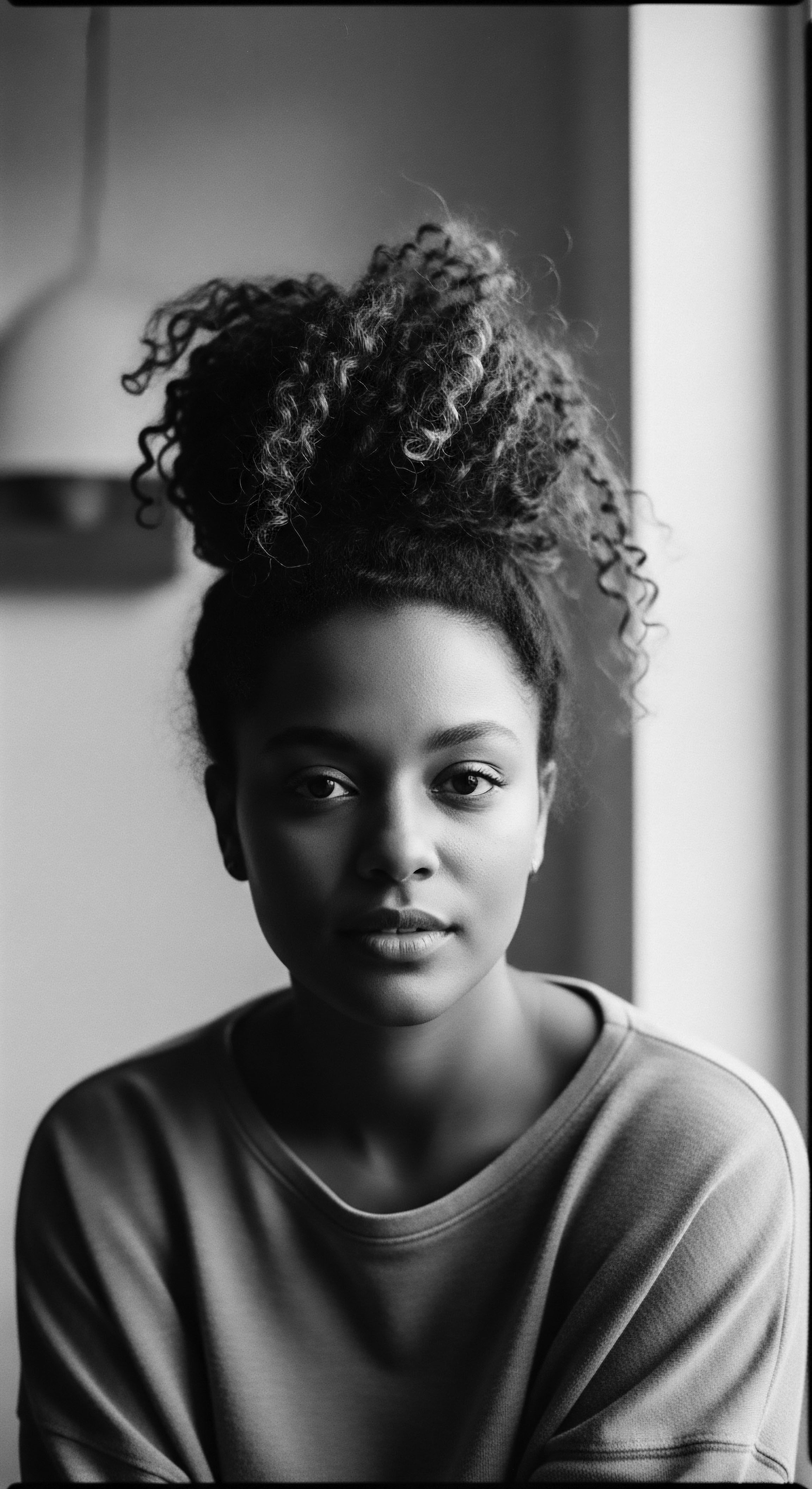
How Did Hair Density Influence Braiding Techniques and Cultural Narratives?
The sheer volume and natural coiling of African hair meant that braiding, twisting, and coiling were not just options, but often foundational techniques. These methods allowed for the effective management and manipulation of abundant hair, transforming it into durable, aesthetically pleasing, and highly symbolic forms. The ability to create a myriad of intricate patterns, from the tight, flat lines of cornrows to the expansive, sculptural forms of elaborate updos, was directly facilitated by the hair’s inherent ability to hold shape and remain compact.
Consider the Cornrow. Its name itself, derived from its resemblance to planted rows of corn, speaks to a deep connection to the earth and agricultural life. The close-to-the-scalp nature of cornrows relies on the hair’s collective density to create a smooth, durable surface. This styling, found across diverse West African cultures for thousands of years, served not only practical purposes, such as hygiene and reducing daily manipulation, but also acted as a canvas for complex narratives.
The patterns could signify tribal affiliation, marital status, or even a specific event like mourning. The density allowed for varied parting patterns, from geometric shapes to curvilinear designs, each line a deliberate stroke in a larger communal story.
Styling choices, particularly braiding, were profoundly shaped by hair’s density, allowing for complex, enduring forms rooted in tradition.
Protective styles, which so many textured hair communities honor today, find their origins in these ancestral practices. The ability of dense, coiled hair to be tucked away, shielded from environmental stressors and daily wear, was recognized and utilized long ago. Styles like Bantu Knots, originating with the Zulu people of Southern Africa, exemplify this.
Each knot involves sectioning, twisting, and wrapping hair onto itself, creating a compact, spiraled form that protects the ends and maintains moisture. The inherent density of the hair lends itself perfectly to forming these stable, self-contained units.
| Historical Approach to Density Valued for volume and ability to hold intricate patterns, symbolizing status and identity. |
| Contemporary Link or Evolution Embraced for versatility in protective styles and self-expression, reclaiming heritage. |
| Historical Approach to Density Required significant communal time for styling and care, strengthening social bonds. |
| Contemporary Link or Evolution Modern salon culture and community events often mirror this shared experience of care. |
| Historical Approach to Density Natural oils and plant-based ingredients used for moisture and scalp health, aiding styling of dense hair. |
| Contemporary Link or Evolution A resurgence of natural ingredients, oils, and butters in holistic hair care. |
| Historical Approach to Density The enduring recognition of hair density's role in styling bridges ancestral practices with modern care rituals. |
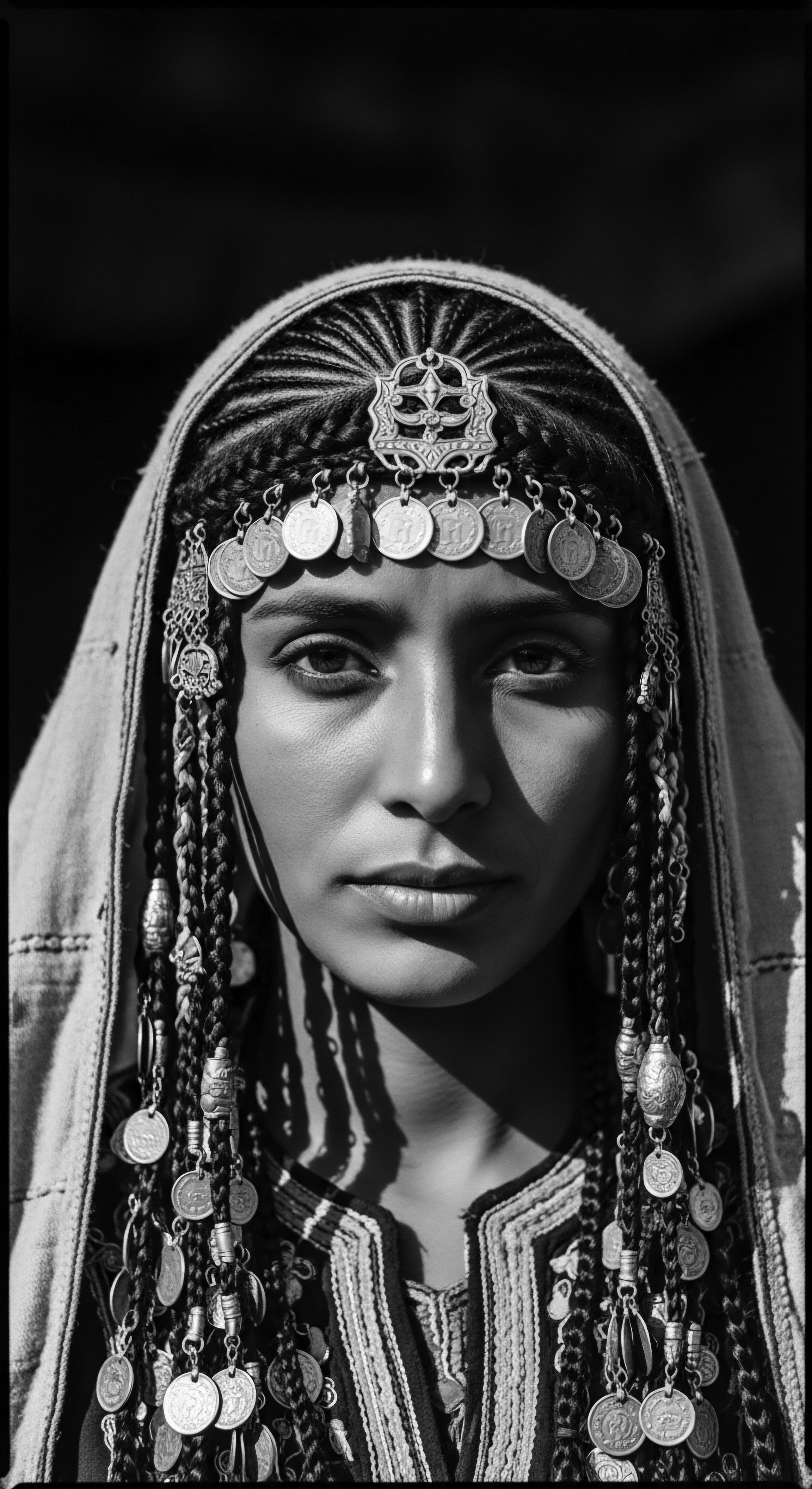
Regional Manifestations of Density-Aware Artistry
Across the vast tapestry of Africa, various communities adapted their artistry to the specific qualities of their hair.
- West Africa ❉ In regions like Nigeria and Senegal, communities like the Yoruba and Wolof developed elaborate braided and coiffed styles that denoted social standing, age, and marital status. The density of hair allowed for the creation of towering styles, sometimes augmented with natural fibers or adornments, that were both visually striking and structurally sound. The Wolof tribe, for instance, used braided styles for men going to war and subdued styles for women in mourning.
- Southern Africa ❉ The Himba people of Namibia are renowned for their intricate dreadlocked styles, coated with a distinctive mixture of ochre paste, butter, and goat hair. This rich, dense application not only protected the hair and scalp from the harsh sun but also created weighty, sculptural forms that communicated age and life stages. The inherent density and resilience of their hair facilitated the formation and maintenance of these substantial locs over a lifetime.
- East Africa ❉ In ancient Egypt, hairstyles symbolized hierarchy and divinity. Elite individuals, both men and women, often wore elaborate wigs made from human hair or plant fibers, intricately braided and adorned with precious materials. While the wigs allowed for manipulation, the natural density of the hair on the scalp would have provided a secure foundation for such elaborate structures, underscoring the foundational role of hair’s inherent body. The Kushites, too, valued tight, coiled braids and headpieces, showcasing a cultural appreciation for dense, textured forms.
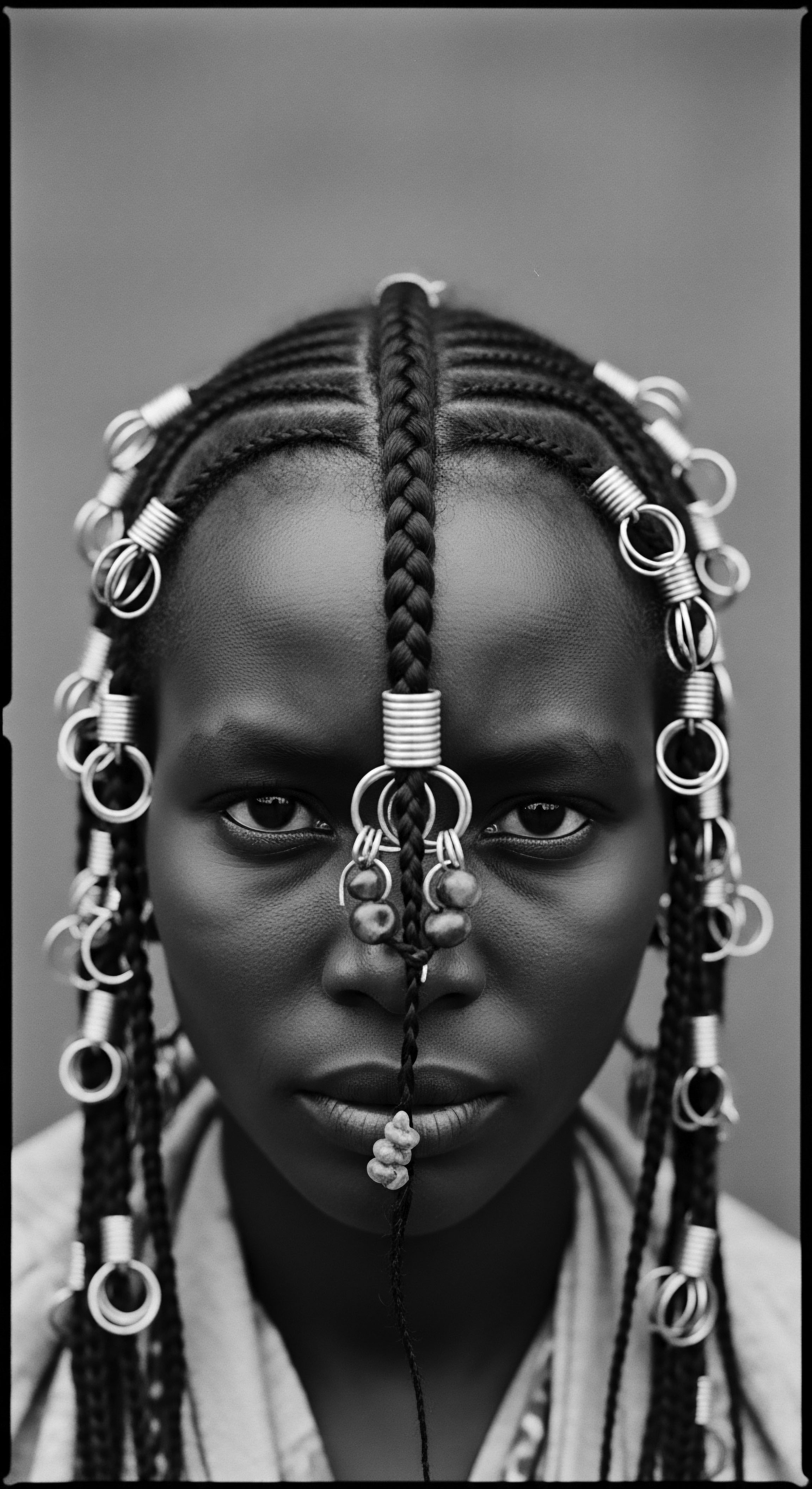
Relay
The profound knowledge of hair density and its properties, honed over generations, became a critical component in the relay of ancestral wisdom, shaping not only styling practices but also the very language and science of textured hair care. This inherited understanding, often implicit in ritual and daily care, laid a foundation that modern science now seeks to articulate and validate. It is a testament to the ingenuity of those who came before, their observations forming a complex understanding of hair that transcends surface aesthetics.

How Did Ancestral Wisdom Anticipate Modern Hair Science?
The unique physical properties of afro-textured hair, particularly its tight coiling and the associated challenges of moisture retention and breakage, were intuitively understood by ancestral communities. Unlike straight hair, which allows natural sebum to easily coat the entire strand, the bends and twists of coiled hair prevent even distribution, leading to increased dryness. This inherent characteristic, directly tied to the hair’s physical density and structure, meant that traditional care practices centered on deep moisturization and gentle handling.
For instance, the consistent application of plant-based oils, butters, and clays—like Shea Butter, Marula Oil, or Rhassoul Clay—was not just for shine; it was a scientifically sound approach to hair health. These practices, born from necessity and observation, effectively addressed the unique moisture needs of dense, coiled hair long before the advent of modern chemistry. Avocado oil, rich in oleic acid, for example, can effectively penetrate the hair shaft, offering deep hydration rather than just superficial benefits, a quality intuitively sought in ancient emollients. The wisdom of these traditional applications speaks to a deep connection between the hair’s inherent structure (which includes its density and coiling) and its optimal care.
The emphasis on protective styling, deeply intertwined with hair density, offers another powerful example. When hair is braided or twisted, especially in styles like cornrows or box braids, it is shielded from daily manipulation, environmental elements, and mechanical stress. This practice, which promotes length retention and reduces breakage, directly addresses the susceptibility of tightly coiled hair to damage. The success of these styles relies heavily on the hair’s ability to compact and hold its form, a direct function of its density and curl pattern.

Evaluating Density’s Role in Protective Styling Longevity
The effectiveness of a protective style, and its longevity, is directly proportional to the hair’s density and the skill with which it is manipulated. Denser hair often supports more complex and substantial styles, which can be worn for extended periods.
- Sectioning Precision ❉ The ability to create clean, precise sections for braids or twists is fundamental. Denser hair provides a more robust canvas for these divisions, ensuring the style’s integrity and minimizing tension on individual follicles.
- Tension Management ❉ While dense hair can withstand more manipulation, ancestral stylists understood the balance required. Excessive tension, even on dense hair, can lead to damage like traction alopecia. The artistry lay in creating styles that were secure yet gentle, distributing weight evenly across the scalp.
- Style Retention ❉ The natural coil of textured hair, often appearing denser, helps braids and twists remain compact and resist unraveling. This inherent quality of the hair itself contributes significantly to the longevity of protective styles.
The careful balance of creating aesthetically pleasing, culturally significant styles while maintaining hair health was a delicate dance performed by hair artisans throughout history. These practitioners, often esteemed members of their communities, possessed intimate knowledge of hair density and its implications for styling longevity and scalp wellness. Their tools, simple yet effective, were designed to work with the hair’s natural inclinations, from wide-toothed combs for detangling to various implements for precise sectioning and adornment.
The narrative of African hair is not just about genetics or texture; it is about the wisdom passed down, the rituals observed, and the artistry refined over countless generations. This collective heritage, deeply informed by the physical reality of hair density, continues to shape our understanding of holistic hair care and cultural expression today.

Reflection
As we gaze upon the intricate patterns of cornrows, the majestic fullness of an Afro, or the grounding presence of locs, we perceive more than mere aesthetic choices. We are witnessing the enduring legacy of hair density, a silent yet profound force that has shaped historical African styling artistry and continues to inform our contemporary relationship with textured hair. Each strand, each coil, carries within it the memory of ancestral hands, of communal gatherings under the sun, and of the sacred reverence held for the body’s crowning glory.
The soul of a strand, truly, lies in its capacity to connect us to a past rich with meaning, resilience, and boundless creativity. This journey through the influence of hair density is a powerful reminder that our hair is a living library, an ever-unfolding narrative of heritage, beauty, and unwavering self-expression.
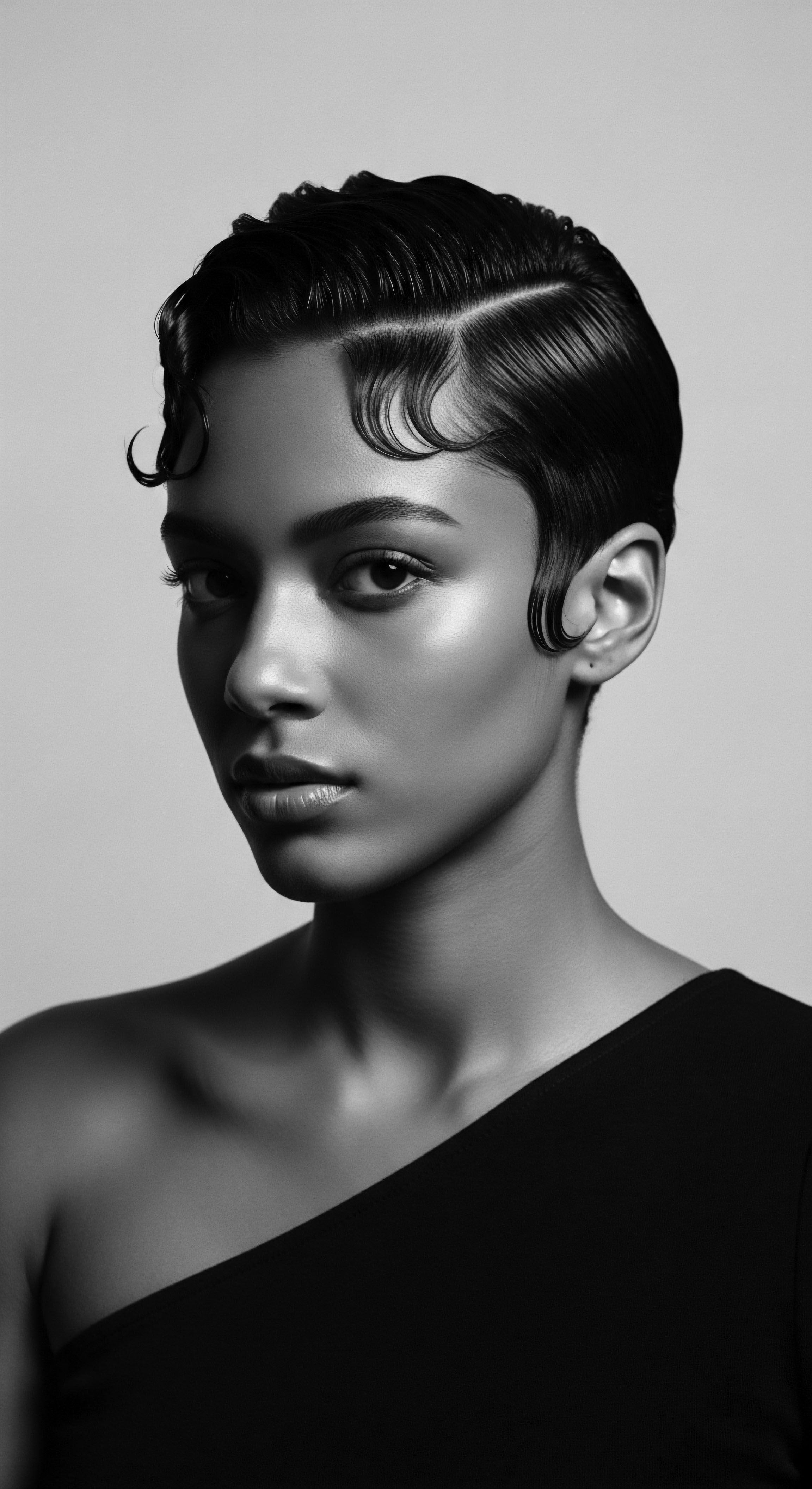
References
- Birnbaum, M. R. et al. (2017). Evaluation of Hair Density in Different Ethnicities in a Healthy American Population Using Quantitative Trichoscopic Analysis. Skin Appendage Disorders, 3(4), 169-178.
- Byrd, A. & Tharps, L. (2014). Hair Story ❉ Untangling the Roots of Black Hair in America (2nd ed.). St. Martin’s Griffin.
- Gathers, R. C. & Lim, H. W. (2009). Central centrifugal cicatricial alopecia ❉ Past, present, and future. Journal of the American Academy of Dermatology, 60(4), 660-668.
- Johnson, T. & Bankhead, T. (2014). Hair it is ❉ Examining the experiences of Black women with natural hair. Open Journal of Social Sciences, 2(01), 86-100.
- Loussouarn, G. (2001). African hair ❉ its physical properties and differences relative to Caucasian hair. Journal of Cosmetic Science, 52(5), 297-307.
- Persadsingh, N. (2006). The Hair in Black Women. Blackwell Publishing.
- Robbins, C. R. (2012). Chemical and Physical Behavior of Human Hair (5th ed.). Springer.
- Sperling, L. C. (1999). Hair density in African Americans. Archives of Dermatology, 135(6), 656-658.
- Tharps, L. (2015, May 31). How does black hair reflect black history?. BBC News.
